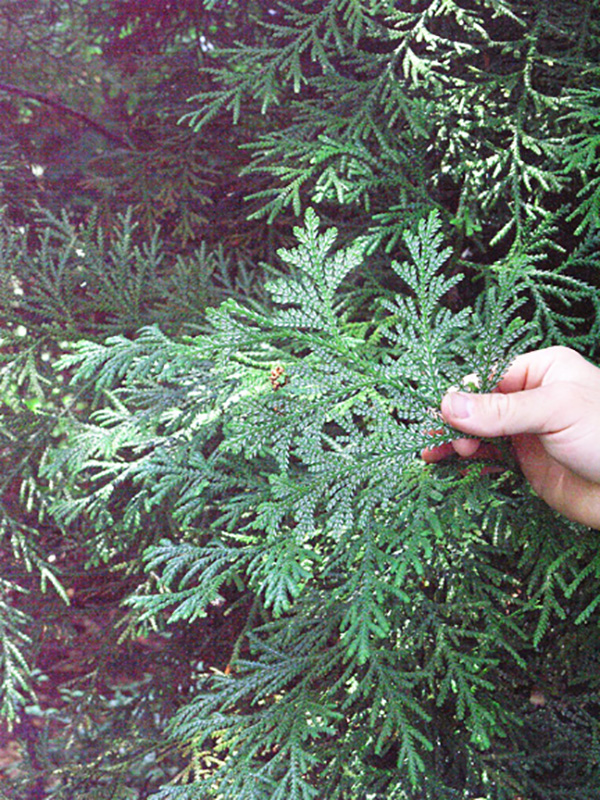
Woody > Thujopsis > Thujopsis dolabrata > Thujopsis dolabrata
Thujopsis dolabrata
False Arborvitae
Origin: From central Japan; introduced to North America in 1861.
Mike's
Opinion


"
Generally an attractive plant and interestingly the only species in the genus. Unfortunately, similar to a pretty but high maintenance friend. Like Dirr states, good for the collector, but not the common landscape.
Michael Pascoe, NDP., ODH., CLT., MSc. (Plant Conservation)
"
| Family |
| Cupressaceae |
| Genus |
| Thujopsis |
| Species |
| dolabrata |
| Category |
| Woody |
| Type |
| Shrub (evergreen) |
| Pronunciation |
| USDA Hardiness Zone |
| 6b - 7a |
| Canadian Hardiness Zone |
| 6 |
| RHS Hardiness Zone |
| H6 |
| Temperature (°C) |
| -21 - (-15) |
| Temperature (°F) |
| -5 - 5 |
| Height |
| 9-15 m |
| Spread |
| 3-6 m |
Photographs
Description and Growing Information
Flowering Period
| General Description |
| A dense, pyramidal evergreen with attractive foliage and bark colour. The only species in this genus and resembles Thuja. Mostly sought after by plant collectors rather than the average gardener. |
| Landscape |
| More for a collection; many other conifers have the same effect without the work. Regardless, a nice looking plant. |
| Cultivation |
| Easily transplanted from containers. Thrives in full sun and organic, moist, acidic soil; likes atmospheric moisture. |
| Shape |
| Densely pyramidal, very nice form. Can be spreading and bushy. |
| Growth |
| Slow |
| ID Characteristic |
| Similar to Thuja but has round cones, winged seeds and larger leaves with white markings underneath. |
| Pests |
| Relatively free, can be partial to bagworm, heart rot and spider mites. |
| Habitat |
| Moist, Japanese forests with organic soil types; protected from wind. |
| Bark/Stem Description |
| Furrowed into thin strips that peel off, red–brown. Attractive when seen. |
| Flower/Leaf Bud Description |
| 2-3 mm long, yellow–orange. Ovate, imbricate. |
| Leaf Description |
| 4-7 mm long and 1-2 mm wide. |
| Flower Description |
| Not attractive looking. Aromatic, and monoecious. |
| Fruit Description |
| Cones an informal globe shape, 13-19 mm long; 6-8 thick, woody scales ending in horn shaped projections; winged seeds. |
| Colour Description |
| Foliage dark green on top, underside has a broad white stripe. Bark grey or red–brown. |
| Texture Description |
| Medium; soft foliage, mildly prickly fruit. |
| Notable Specimens |
| The Gardens of Fanshawe College, London, Ontario, Canada. National Trust Trelissick Garden, Feock, near Truro, Cornwall, United Kingdom. |
| Propagation |
| Seeding is difficult; cuttings are almost 100% effective – even large forest trees are successfully propagated from cuttings. Cuttings taken in November can take 10 weeks to root; apply hormone and root in mist. |

